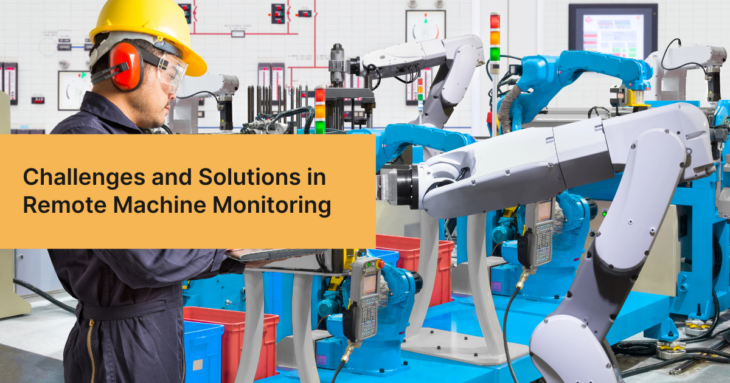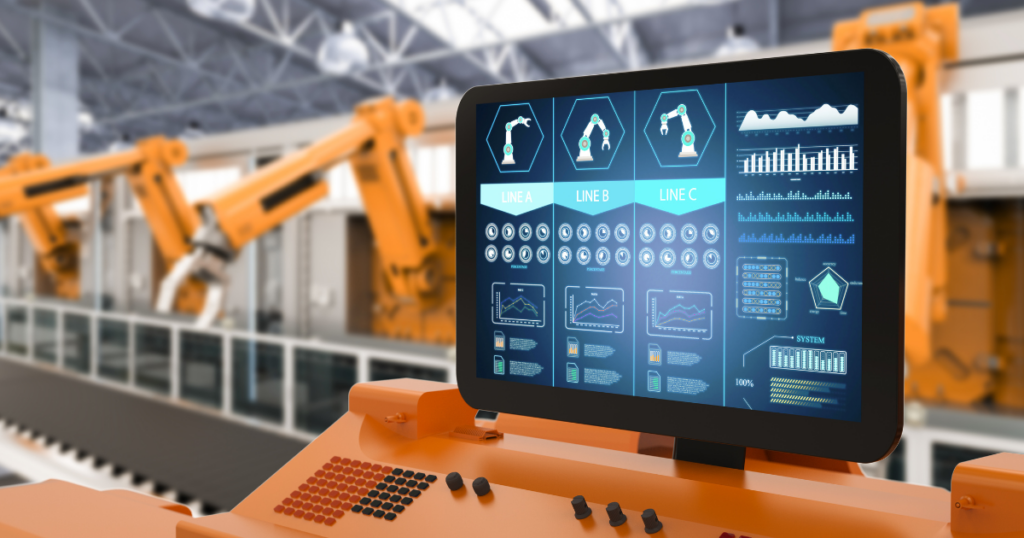Challenges and Solutions in Remote Machine Monitoring
- Home
- Blog Details

- October 17 2024
- systemadmin
As the manufacturing industry steadily transitions into Industry 4.0, monitoring machines remotely has become more than just a trend. Thanks to IoT and digital technology advancements, manufacturers can now monitor their equipment from anywhere and keep things running smoothly. But like with any new technology, remote machine monitoring comes with its own set of challenges. In this article, we will discuss some of those challenges and solutions in remote machine monitoring to help you understand how to overcome them.
Table of Contents
ToggleHow Machine Monitoring Works in Manufacturing?
Challenges in Remote Machine Monitoring
This section discusses the challenges and solutions to remote machine monitoring.
1. Connectivity Problems
IoT devices connect to wireless networks for the transmission of data between them. Hence, constraints in connection can greatly affect remote machine monitoring regardless of whether indoors or outdoors. Companies located in remote areas face common issues such as weak connectivity and interruptions with transferring data. Indoor environments also pose challenges, such as signal interference from machinery or building structures that can disrupt wireless communication.
Solution:
Deploying industrial-grade Wi-Fi access points and mesh networks can improve signal strength and coverage for indoor connectivity issues. These systems reduce interference from machinery and walls and maintain networks. Implementing redundant network solutions like secondary internet connections or cellular backups ensures consistent data flow in tougher environments. Upgrading to 5G technology can also enhance both outdoor and indoor connectivity.
2. Data Security Concerns
Data security is critical in remote machine monitoring. Integrating IoT devices into manufacturing increases the entry points for cyberattacks on system networks. Important data from manufacturing processes are vulnerable to breaches, unauthorized access, or tampering when the networks are not properly secured. Also, since data is being transmitted over networks and stored in the cloud, ensuring its integrity and confidentiality is a task for all platforms offering IoT services.
Solution:
IoT monitoring platforms must implement strong encryption protocols for data in transit and storage to improve data security. Regular security audits and updates to software and firmware are one way to protect against weaknesses in the system. Using robust authentication methods such as multi-factor authentication (MFA) also acts as an extra layer of protection. Finally, training staff on cybersecurity best practices can reduce human error risk, leading to security breaches.

3. Integration with Legacy Systems
Integrating IoT technology with legacy systems is often a significant challenge. Many manufacturing facilities operate older equipment unsuitable for modern IoT solutions. Because of the mismatch, compatibility issues arise and limit the ability to collect and analyze data from these machines. When manufacturers do what to upgrade, retrofitting or replacing legacy systems can be costly and complex.
Solution:
To tackle challenges with integration, manufacturers can use IoT gateways and middleware that act as intermediaries between legacy systems and new IoT systems. These tools facilitate data exchange by bridging between old and new protocols. Manufacturers have to work with IoT platforms to implement pilot projects. Starting with simple implementations can help test compatibility and make necessary adjustments before full-scale deployment. The upgrades should be gradual and phased; manufacturers must work with experienced vendors who can handle such projects.
4. Scalability
Scalability is increasing the size of the IoT remote monitoring system as the manufacturing operations grow. It could be an increase in the size of the plant or an increase in the distribution of plants across the country. As operations increase, volumes of data and the number of devices to monitor also increase. Scaling up can also strain existing infrastructure, leading to performance bottlenecks and inefficiencies.
Solution:
To solve scalability challenges, manufacturers can adopt platforms with cloud-based solutions that offer flexible, on-demand resources to handle growing service needs. Modular IoT systems are designed to be used for incremental expansion. Manufacturers can add new devices and capabilities without completely changing the entire system.
5. Implementation Costs
Implementation costs are often a major barrier to adopting remote machine monitoring systems by legacy manufacturers. The initial investment in IoT devices, sensors, and infrastructure can be expensive. There are ongoing service, maintenance, upgrades, and data management costs. Balancing these expenses with expected ROI requires careful planning and budgeting for many manufacturers.
Solution:
To manage implementation costs, manufacturers can consider a phased approach where IoT solutions are gradually rolled out to spread expenses over time. Opting for scalable solutions, which allow for incremental investments that go with the growth of the process, is also viable. Conducting a cost-benefit analysis of implementation vs. continuing legacy systems by IoT service providers can persuade manufacturers to change their minds.
Closing Thoughts
Now that we have discussed challenges and solutions to remote machine monitoring, it’s evident that they are solvable. By implementing effective solutions, manufacturers can harness the full potential of IoT technology to stay competitive and achieve greater control over their operations.
If you want to upgrade your machine monitoring technology or start from scratch, contact our team today! Explore how MachineCONNECT provides intelligent, real-time insights and streamlines management for your manufacturing systems. Request a Demo Today!

